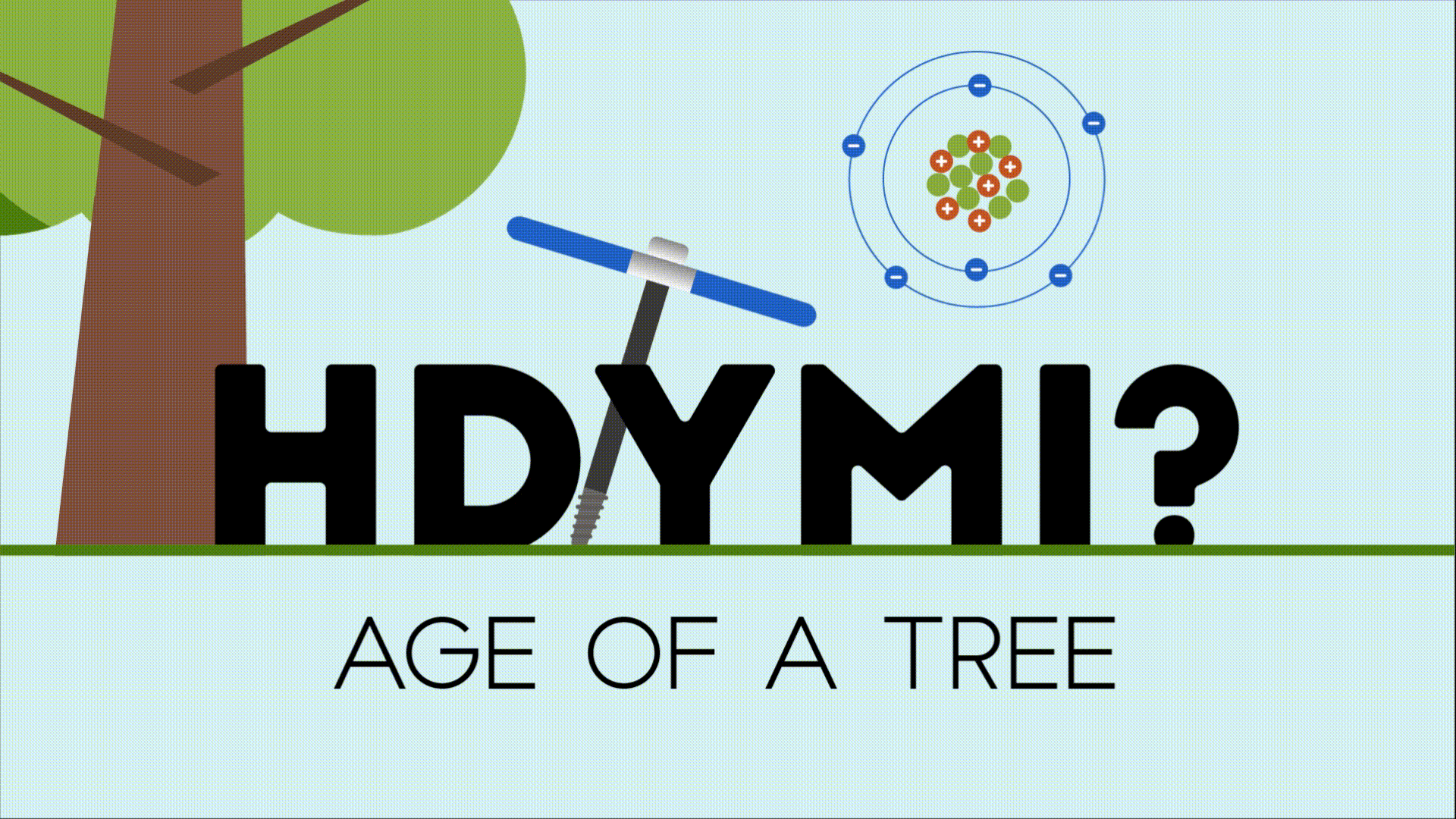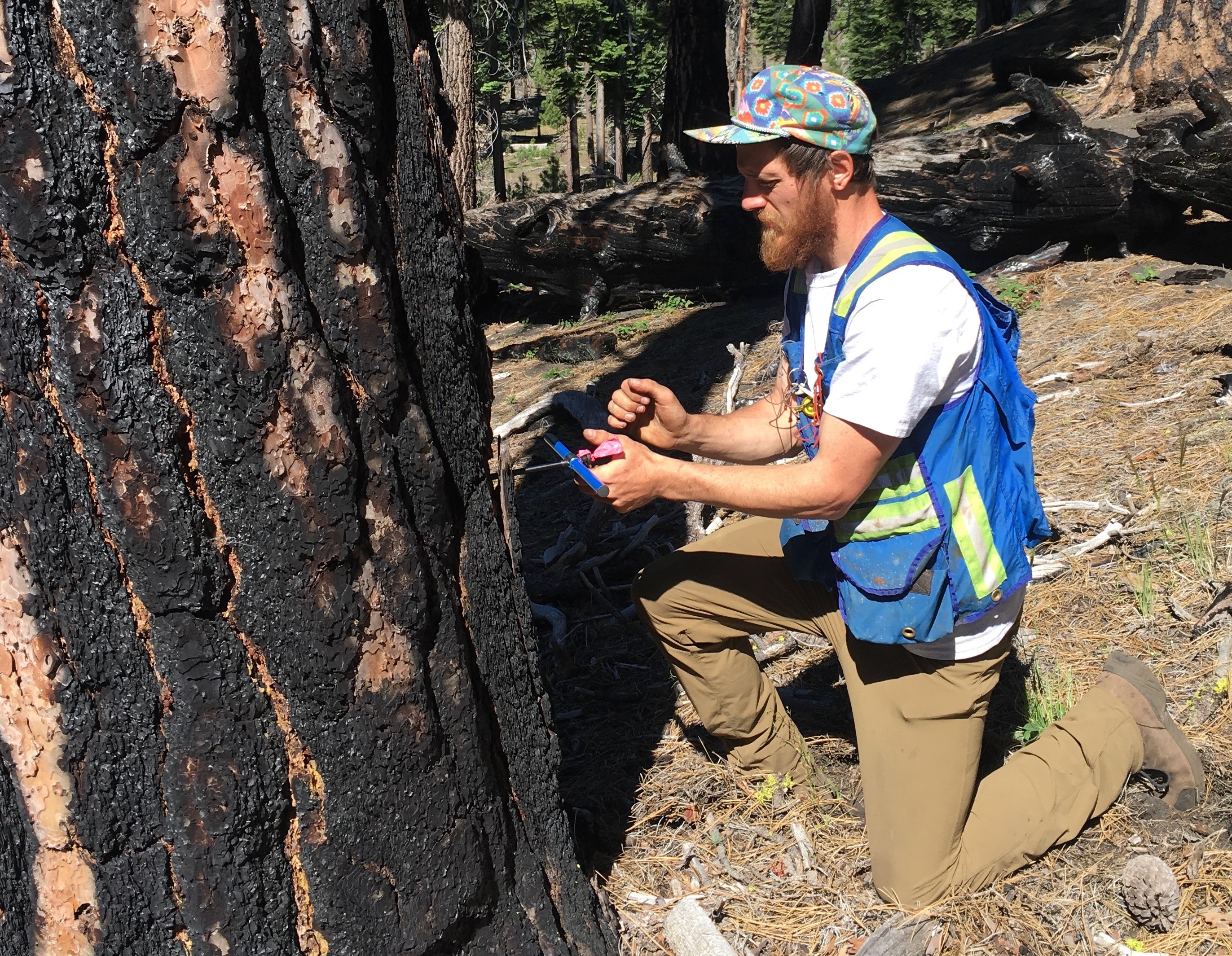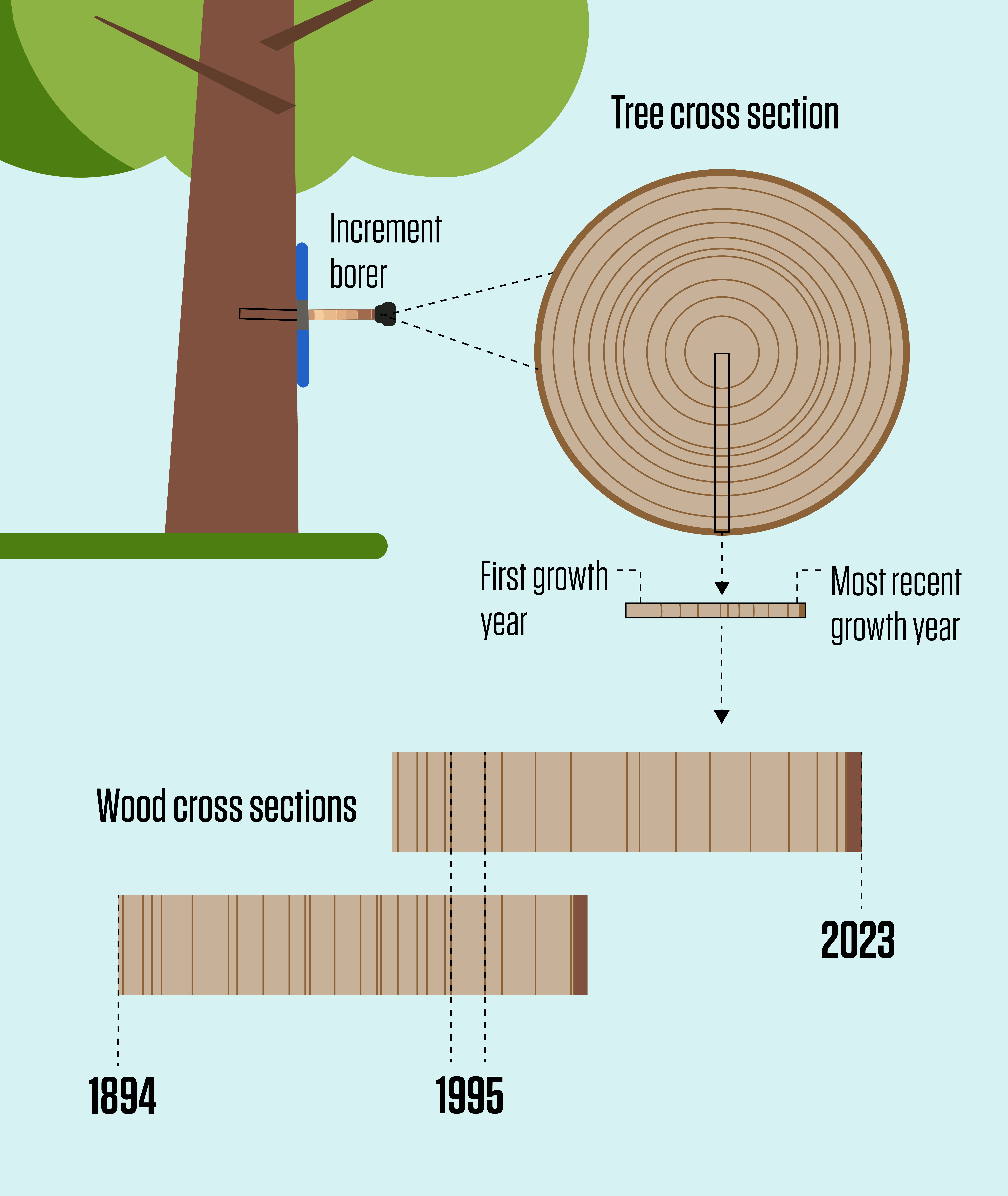How Do You Measure the Age of a Tree?

You’re walking through the woods or on a street in your neighborhood, and you come upon a giant oak towering above your head. This majestic tree, you think, could have been standing here for a century or more — perhaps it even predates the Civil War. But how can you know for sure?
Getting the answer, it turns out, is not trivial. In fact, it has spawned an entire field of science: dendrochronology.
Measuring the age of trees starts with a basic biological fact: Trees grow new wood every year. That does not mean, however, that larger trees are necessarily older trees. Some tree species make wood much faster than others — the paulownia or princess tree, for example, can reportedly grow five meters in a single year, while a slow-growing hemlock could take a decade or more to reach that height. And a tree in an open, sunny site in fertile soil can bulk up far faster than one growing on a poor site or in deep shade.
Fortunately, trees in parts of the world with well-defined growing seasons — which includes the temperate and boreal (cold, high-latitude) regions of the Northern and Southern hemispheres along with parts of the tropics that have wet and dry seasons — encode their ages in their wood. In spring, when trees grow relatively quickly, they put on light-colored “springwood” or “earlywood.” Wood formation eventually slows, and trees switch to darker-hued “summerwood” or “latewood.” These alternating light and dark bands appear as rings in a cross section of a tree’s trunk. Counting them yields a pretty good estimate of the tree’s age.
Unfortunately, when we encounter a living tree, we can’t see its rings. We could cut the tree down or wait for it to fall, but that would limit us to knowing the ages of dead trees, which would be sad. In one notorious incident in 1964, a scientist who cut down a bristlecone pine in the mountains of Nevada discovered, after counting its rings, that he had killed the oldest tree ever measured! The tree, named Prometheus, had 4,862 rings, but because its innermost rings were missing, it’s likely to have been over 5,000 years old. To this day, no older tree has been definitively identified.
Dendrochronologists rarely cut down living trees today. Instead, they use a tool called an increment borer to age trees harmlessly. The increment borer is essentially a narrow, T-shaped hollow-bit steel drill with threads on the outside. Scientists place the bit on the bark near the base of a tree and crank it repeatedly, driving it into the trunk. This can be hard, physical work. Once the bit reaches the center of the tree, the researcher extracts it along with a roughly 5-millimeter-wide cylinder of wood that, ideally, contains a sliver of each growth ring. The process can be compared to an arboreal biopsy, and the tree quickly heals over the small puncture wound.

Then comes the painstaking and eye-straining work of counting each of those rings using a microscope or computerized scanner.
Tree ring counting alone is not a perfect aging method. A tree might appear to produce more than one ring in a year that starts dry and becomes very wet. In very dry years, a tree can also skip growth rings altogether. So tallying the rings of just one tree can yield a misleading age.
To overcome that challenge, dendrochronologists turn to a technique called cross-dating. By comparing a core or slice from one tree with those of others, scientists can identify years when all trees in an area skipped a year, or when they grew unusually fast. That allows researchers to confidently assign each ring to a specific year, and thus pinpoint the age of a tree to within a year.

The tropics, where trees can grow year-round, can present a more serious problem: Many trees there don’t produce rings at all. To measure the age of tropical trees, scientists sometimes turn to a totally different technique: radiocarbon dating. Trees are roughly half carbon by dry weight, and because a type of carbon known as carbon-14 converts to nitrogen-14 at a known rate, scientists can estimate a tree’s age based on the amount of nitrogen-14 in its tissue. But these methods produce estimates that are far less precise than the single-year resolution offered by tree-ring dating. They are also more expensive.
(Learn more about radiometric dating. In fact, tree rings have been used to calibrate the carbon-14 dating technique!)
Counting tree rings is good for more than learning about trees. It can also help us learn about Earth’s climate. That’s because a tree’s rings encode information about the past conditions that tree grew in. Wetter years tend to produce wider rings than drier ones, for example, so rings from trees of a certain region can reveal when an area was hit by droughts, and how long those droughts lasted. Tree rings can also tell us how often and how severely forests burned in the past, which can guide land managers using prescribed fires to keep forests healthy today.
Using ring counts of living and dead trees — and objects made from the wood of those trees — scientists have built enormous databases that enable them to piece together climate records dating back as far as 9,000 years! While we can look deeper into the past using ice cores and ocean sediments, tree-ring records are unique in enabling researchers to pinpoint climate fluctuations to specific years. Trees also cover much more of Earth’s surface than ice does.
Knowing how Earth’s climate varied in the past is crucial for understanding the hotter and more variable climate we’re experiencing today. For example, a recent study of the thickness of cell walls in pine tree rings concluded that today’s warming exceeds that of any period in the past 1,200 years. Such studies can also help us make our society and our ecosystems more resilient to climate change.
So next time you find yourself gazing in awe at a massive tree, think about the fact that it’s not just standing there. It’s busy recording data on today’s climate: data tomorrow’s scientists may one day find very useful.

